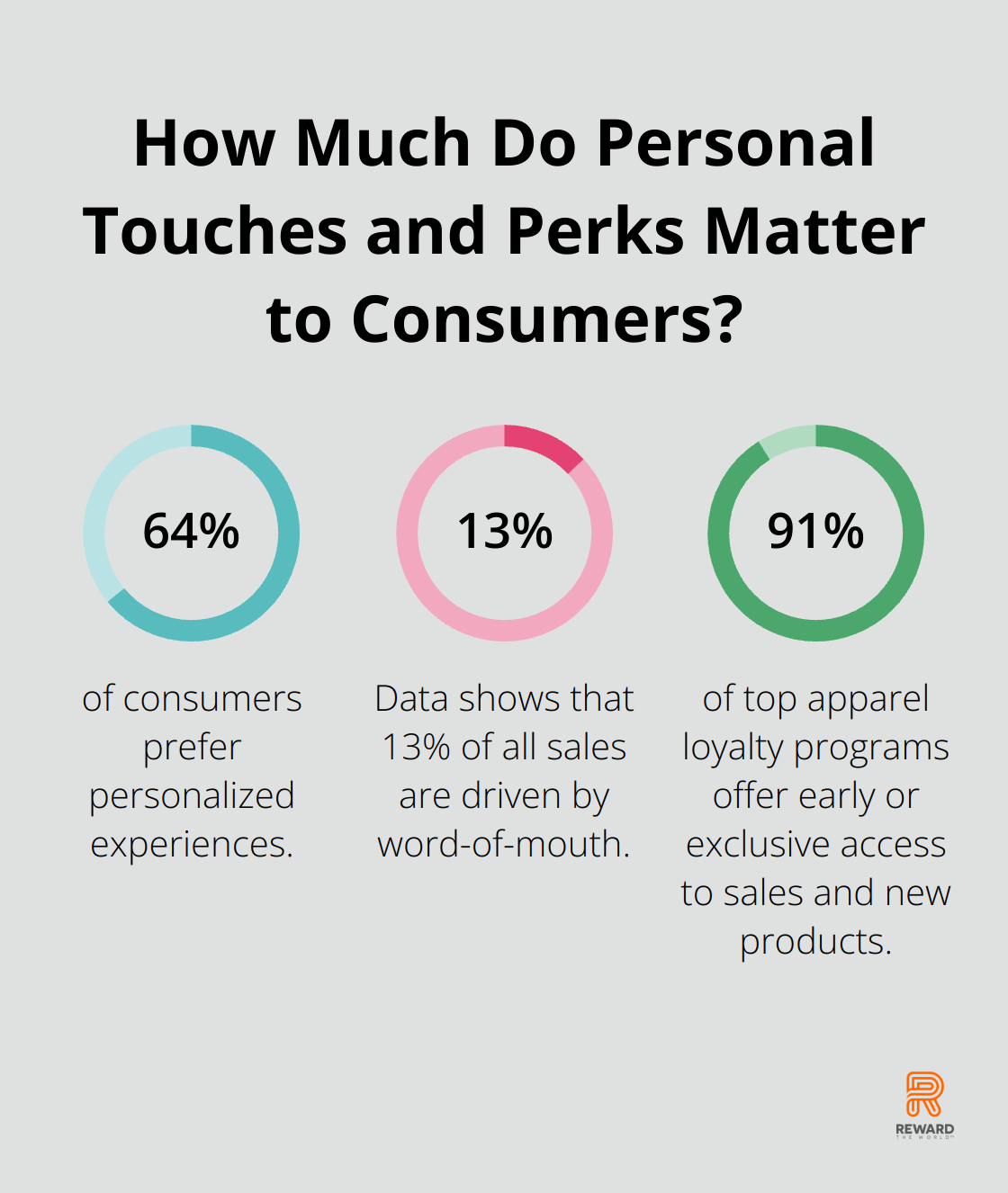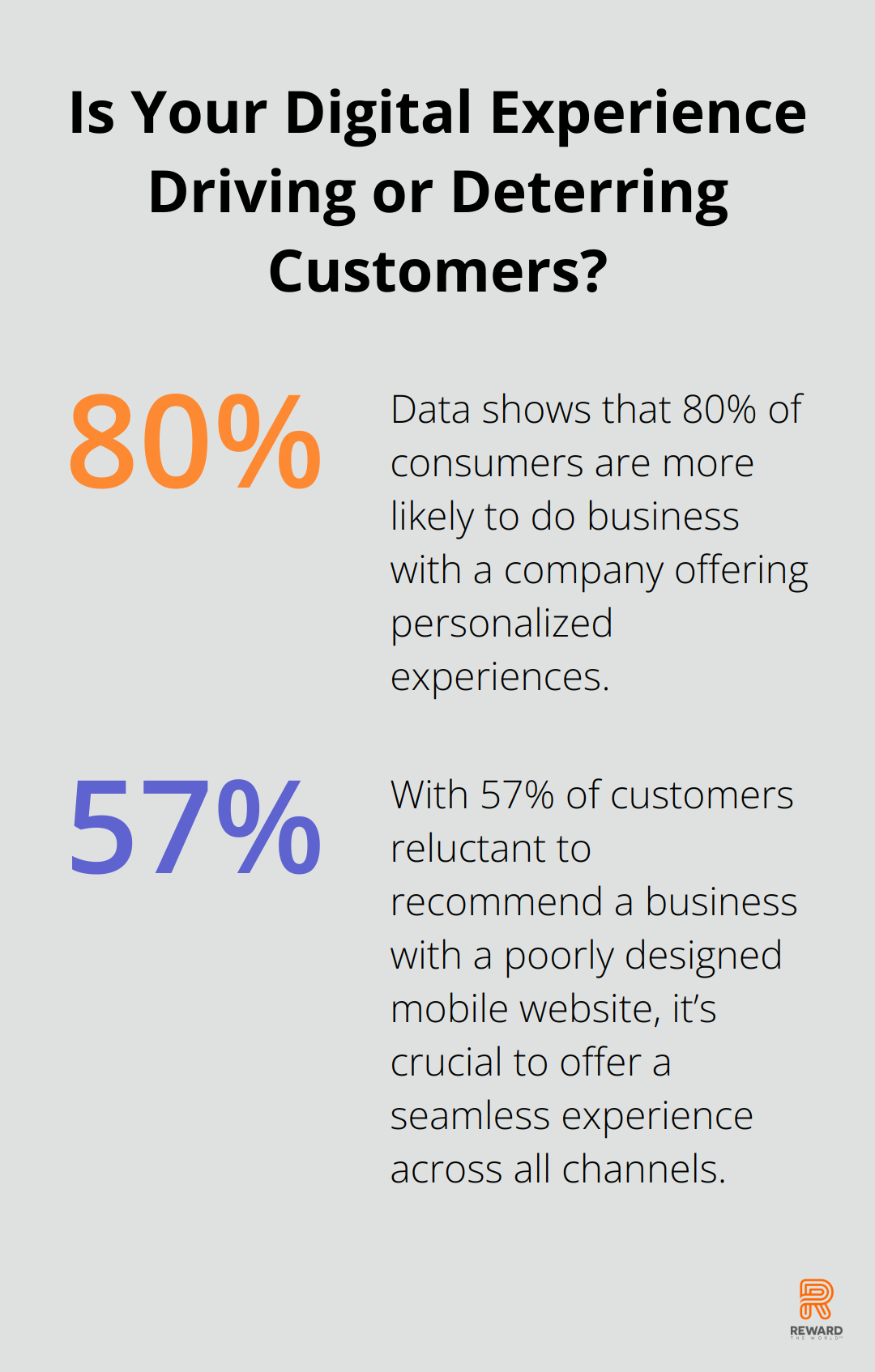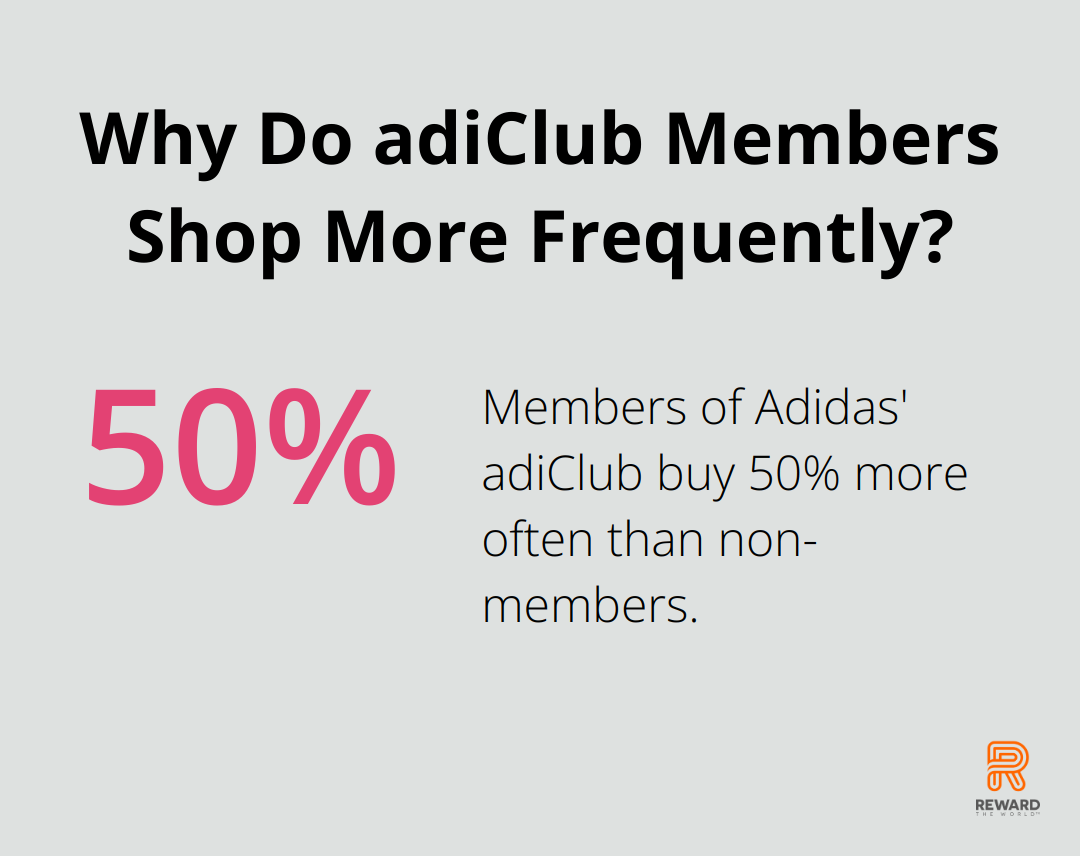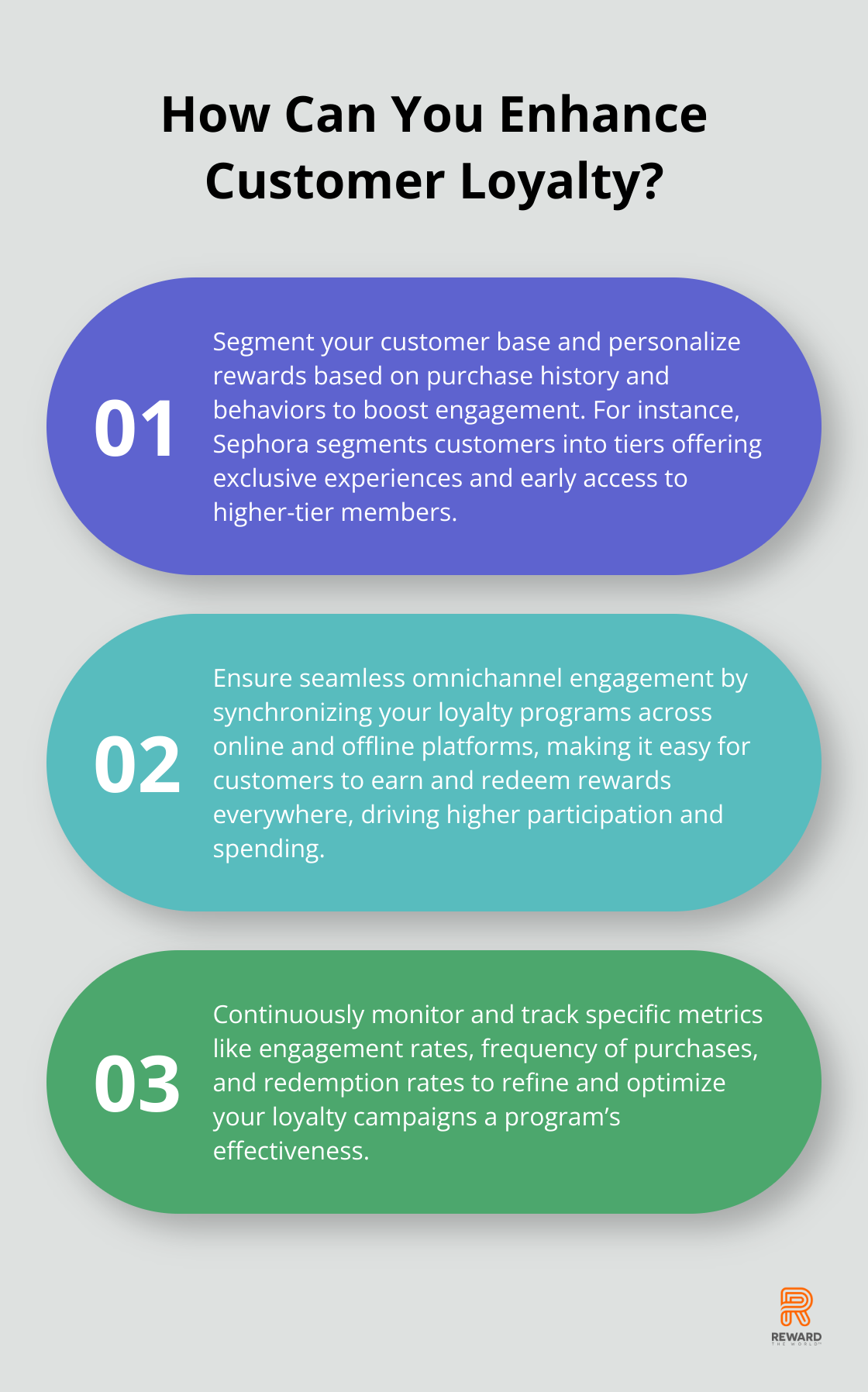
Loyalty campaigns are vital for building lasting customer relationships and driving repeat business.
They stand apart from other marketing strategies by focusing on long-term engagement rather than short-term gains.
At Reward the World, we present strategies and real-world examples to illustrate how you can create impactful loyalty campaigns that resonate with your audience in this article Effective Loyalty Campaigns: Guide
What Are Loyalty Campaigns?
Loyalty campaigns are designed to foster long-term engagement by rewarding repeat business and deepening the relationship between a brand and its customers. These campaigns are paramount in today’s competitive landscape, where 84% of consumers say they’re more likely to stick with a brand that offers a loyalty program. Unlike general marketing strategies that often aim for immediate sales, loyalty campaigns focus on retaining customers and increasing their lifetime value.
Why Loyalty Campaigns Matter
Loyalty campaigns have a direct impact on customer behavior and business growth. Adidas adiClub members buy 50% more often than non-members. Additionally, loyalty programs can lead to a 12-18% increase in revenue due to repeat business. These figures underscore the importance of integrating loyalty campaigns into your marketing strategy to ensure sustainable growth.

A successful loyalty campaign not only boosts customer retention but also enhances overall customer satisfaction. For example, 91% of top apparel loyalty programs offer early or exclusive access to sales and new products, which significantly enhances customer loyalty.
Measuring Success with Key Metrics
To gauge the effectiveness of a loyalty campaign, it’s crucial to monitor specific metrics. Engagement rates, frequency of purchases, and customer lifetime value are among the most telling. For instance, Amazon Prime members spend more than double that of non-member customers, illustrating the value of a well-executed loyalty program.
Referral rates are also important. They indicate how often current customers are bringing in new ones, which can be a strong signal of program success. Data shows that 13% of all sales are driven by word-of-mouth, highlighting the power of referrals in expanding your customer base.
Additionally, tracking the redemption rates of rewards can provide insights into which incentives are most appealing to your audience. A high redemption rate suggests that your rewards are attractive and meaningful to your customers, thereby driving higher engagement and satisfaction levels.
Differentiating Loyalty Campaigns from Other Strategies
Loyalty campaigns should be distinguished from broader marketing tactics by their focus on long-term customer relationships. While traditional marketing might prioritize immediate sales through discounts or promotions, loyalty campaigns build sustained engagement. For instance, experiential rewards, such as exclusive events or personalized experiences, are becoming increasingly popular and effective. This strategy aligns with the 64% of consumers who prefer personalized experiences, demonstrating the need for tailored rewards in modern loyalty programs.
In sum, loyalty campaigns are an essential tool for nurturing ongoing customer relationships and driving repeat business. By focusing on the right metrics and differentiating your approach from short-term marketing strategies, you can create a loyalty program that not only retains customers but also transforms them into brand advocates.
How Can Loyalty Campaigns Be Designed Effectively?
Personalization and Customer Segmentation
Personalization is a game-changer for loyalty campaigns. Data shows that 80% of consumers are more likely to do business with a company offering personalized experiences. To achieve this, segment your customer base based on purchase history, preferences, and behaviors. Netflix, for instance, relies on advanced machine learning algorithms to analyze data and produce suggestions, significantly boosting engagement rates. By catering to specific customer segments, you create a more meaningful connection, driving higher participation in your loyalty program.

Utilize AI and machine learning tools to analyze customer data and refine your segmentation strategy. This precision allows you to offer personalized rewards that resonate deeply. For example, Sephora’s Beauty Insider program segments customers into tiers based on spending, offering exclusive experiences and early access to new products for higher-tier members.
Use of Rewards and Incentives
Rewards are the backbone of any loyalty campaign. Companies like Amazon Prime have demonstrated that valuable incentives can lead to significant increases in customer retention and spending. According to recent data, Prime members spend almost twice as much as non-members do, clocking in at nearly $1,300 in purchases every year. Offering diverse rewards, such as discounts, exclusive products, or experiential benefits, helps cater to different customer preferences.
Moreover, high-quality rewards can significantly influence program success. Research indicates that 91% of America’s top apparel loyalty programs provide early access to sales, enhancing customer loyalty. Ensure your rewards are desirable and attainable. Clear communication of how points or rewards can be accumulated and redeemed is vital for keeping customers engaged.
Omnichannel Engagement and Communication
Incorporating omnichannel engagement is essential for modern loyalty campaigns. With 57% of customers reluctant to recommend a business with a poorly designed mobile website, it’s crucial to offer a seamless experience across all channels. This includes in-store, online, and mobile platforms. Consistency in messaging and incentives across these channels ensures customers have a cohesive and satisfactory experience.
Invest in technology that facilitates omnichannel interactions. Retail brands like Adidas synchronize their loyalty programs across online and offline platforms, allowing customers to earn and redeem rewards seamlessly. Engagement should also extend to social media; leveraging platforms like Instagram and TikTok can drive significant interactions, especially among younger demographics. For instance, surprise and delight tactics, offering unexpected perks or shout-outs on social media, can strengthen emotional bonds with your audience.
As brands navigate economic uncertainties, understanding and implementing these strategies can create robust loyalty programs that foster enduring customer relationships. Keep these practical tips in mind as you design loyalty campaigns that stand out and succeed.
What Makes a Loyalty Campaign Successful
Proven Campaigns from Market Leaders
Several brands have set benchmarks with their loyalty programs, yielding significant results. Take Amazon Prime, for instance. Their program is not just about free shipping; it’s loaded with perks like Prime Video and exclusive discounts. The result? Prime members spend an average of $1,400 annually on Amazon. This is significantly more than non-Prime members.

Sephora’s Beauty Insider program serves as another excellent model. By segmenting their customers into tiers based on spending, they offer tailored rewards such as early access to products and exclusive events. This segmentation has led to a high level of customer engagement, ensuring that high-spenders feel valued and continue to shop.
Adidas’ adiClub also stands out by integrating a seamless online and offline experience. Members buy 50% more often than non-members, showcasing how synchronized omnichannel strategies can boost customer participation and spending.
Techniques and Outcomes
Personalization is pivotal. Netflix’s use of AI and machine learning to offer personalized content recommendations has driven engagement through the roof. By leveraging customer data, companies can tailor their loyalty offers to fit unique preferences and behaviors, thereby increasing relevance and participation.
Exclusive access and early bird specials are another powerful technique. Research indicates that 91% of America’s best apparel loyalty programs offer early or exclusive access to sales and new products. This not only makes customers feel special but also drives urgency and repeat purchases.
Gamification is gaining momentum. Programs that incorporate game-like elements, such as points and tiers, see higher engagement rates. Sephora’s tiered rewards and Starbucks’ star-based loyalty system are cases in point. These elements make the shopping experience more interactive and rewarding, fostering a deeper connection with the brand.
Best Practices and Lessons
Consistency across channels is non-negotiable. Brands like Adidas have mastered the art of delivering seamless experiences both online and in-store. This uniformity builds trust and ensures a smooth customer journey, critical for retaining loyal customers.
Clear and frequent communication is essential. Customers need to understand how they can earn and redeem rewards. Miscommunication can lead to frustration. Regular updates and transparent guidelines help maintain clarity and satisfaction.
Offering a mix of experiential and tangible rewards can cater to diverse customer preferences. While discounts and freebies are attractive, experiences like exclusive events or personalized services can create memorable moments. This blend ensures that the loyalty program appeals to a broad audience, keeping them engaged longer.
By studying these successful campaigns, brands can gain valuable insights into designing their own effective loyalty programs. It’s clear that understanding and adapting to consumer behavior, leveraging technology, and maintaining consistency are key elements in building a program that not only drives repeat business but fosters lasting customer relationships.
Conclusion
Effective loyalty campaigns are more than just programs; they are strategic efforts that drive long-term customer retention and enhanced engagement. By incorporating personalization, offering diverse and meaningful rewards, and ensuring consistent omnichannel engagement, brands can create loyalty campaigns that truly resonate with their audience.

Continuous improvement and adaptation are crucial for the success of these campaigns. Monitoring key metrics such as engagement rates, purchase frequency, and reward redemption rates allows brands to fine-tune their approach and keep their programs relevant and appealing. Embracing advanced technologies like AI and machine learning can significantly enhance personalization efforts, leading to better customer experiences.
At Reward the World, we provide a robust platform to help businesses achieve their loyalty campaign goals. Our dynamic global incentives platform supports various demographics and budgets with instant reward delivery, extensive choice, and seamless integration. With 24/7 availability and robust analytics, Reward the World ensures that your loyalty programs are not only effective but also cost-efficient.
By leveraging the right strategies and continuously adapting them, brands can foster enduring loyalty and drive long-term business success. Investing in well-designed loyalty campaigns ultimately results in deeper customer relationships and sustained growth.
